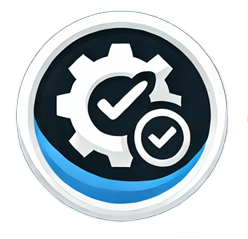
Introduction
Once you understand the mindset and foundational skills needed to start in QA, the next step is learning the practical tools and processes that define a tester’s daily work. While QA is more than just following checklists and running scripts, knowing how to use essential tools, create structured test plans, and follow industry best practices will set you up for long-term success.
This post breaks down the fundamental components of a QA workflow, giving you a clear starting point as you build your skills.
1. Essential QA Tools and Their Use Cases
Modern QA professionals use a combination of manual and automated testing tools to ensure software quality. While tools will vary based on the company and tech stack, these are some of the most commonly used categories:
1.1 Bug Tracking and Test Management
QA teams need a centralized place to document test cases, track defects, and manage testing progress.
- JIRA – The most widely used issue tracking and test case management tool in agile teams
- TestRail – A structured test case management tool designed for manual and automated testing workflows
- Trello/Asana – Simpler alternatives for smaller teams managing QA tasks in a visual format
1.2 Browser and Mobile Testing Tools
- Browser DevTools – Built into Chrome, Firefox, and Edge, these allow testers to inspect elements, analyze network requests, and debug errors
- BrowserStack/Sauce Labs – Cloud-based testing platforms that provide access to multiple browsers and devices for cross-browser testing
- Android Studio/Xcode – Official development environments for mobile testing, allowing manual testing and debugging of apps
1.3 API Testing Tools
Many modern applications rely on APIs for data exchange between frontend and backend services. Testing APIs ensures data flows correctly.
- Postman – A widely used API testing tool for sending requests, verifying responses, and automating API tests
- REST Assured – A Java-based library for testing RESTful APIs
- cURL – A command-line tool for making API requests and troubleshooting network calls
1.4 Automation Testing Tools
While beginners in QA start with manual testing, automation becomes crucial for faster execution and regression testing.
- Selenium WebDriver – The industry-standard tool for automating web application testing
- Cypress – A JavaScript-based tool for fast, reliable UI testing with real-time debugging
- Playwright – A modern automation tool for testing across multiple browsers, designed for parallel execution
Selecting the right tools depends on your project needs, team preferences, and the application you are testing. As you gain experience, you will learn which tools fit best for different testing scenarios.
2. Test Plans: Structuring Your Testing Efforts
2.1 What is a Test Plan?
A test plan is a structured document that outlines how, when, and what will be tested in a project. It ensures that testing is organized, efficient, and aligned with business needs. If you’re looking to build a QA framework that scales with your team, check out Build a QA Framework for Teams: Empower Your QA Process and Elevate Software Quality for insights on creating structured testing workflows.
For a broader look at how QA fits into software development, explore Understanding the Basics of Quality Assurance (QA) Testing to see how different testing types and strategies come together to improve software quality.
2.2 Key Components of a Test Plan
A well-organized test plan typically includes the following sections:
- Scope of Testing – What features or areas of the application will be tested?
- Testing Objectives – What are the key goals of this testing phase?
- Test Strategy – Will testing be manual, automated, or both?
- Test Environments – Will tests be conducted on staging, production, or local environments?
- Test Cases and Scenarios – The structured steps that define how features will be tested
- Defect Reporting and Tracking – The process for logging and managing bugs
2.3 Why Test Plans Matter
- They ensure clear expectations between QA, developers, and stakeholders
- They help prioritize testing based on risk and impact
- They streamline documentation for compliance or audits
Even if you are not required to create full test plans in your role, understanding their purpose helps you align your testing efforts with business and project goals.
3. Common QA Practices Every Tester Should Know
3.1 Writing Test Cases
Well-structured test cases reduce confusion and improve test coverage. Key best practices include:
- Keeping test steps clear and repeatable
- Writing both positive and negative test cases
- Covering edge cases that users might encounter
- Using consistent naming conventions for better organization
If you want to master test case writing, check out this detailed guide.
3.2 Exploratory Testing
Test cases help structure testing, but exploratory testing allows testers to discover unexpected issues that scripted tests might miss.
- Follow user journeys instead of predefined steps
- Perform ad-hoc testing based on intuition and risk areas
- Identify usability flaws, UI inconsistencies, or edge cases
Great testers balance structured testing with exploratory approaches to maximize test coverage.
3.3 Bug Reporting Best Practices
QA testers do not just find bugs—they communicate them clearly to ensure fast resolution.
A strong bug report includes:
- A clear, descriptive title – Example: “Checkout page crashes when applying a discount code”
- Step-by-step reproduction steps – So developers can replicate the issue
- Expected vs actual results – What should happen vs what actually happens
- Screenshots, logs, or videos – Evidence makes it easier to understand and fix the problem
If you want to improve your bug reporting, read this article on writing developer-friendly bug reports or watch this YouTube video on bug reporting.
3.4 Regression Testing
Regression testing ensures new updates do not break existing functionality. This is crucial when teams frequently release updates or bug fixes.
Best practices include:
- Maintaining a set of core regression test cases that cover critical functionality
- Running automated tests where possible to speed up the process
- Prioritizing high-impact areas, like checkout, authentication, or data entry features
Good regression testing prevents unexpected failures in production.
4. Developing Strong QA Habits
Beyond tools and processes, developing strong habits makes a big difference in your QA career:
- Stay organized – Use documentation tools or test case management systems to track progress
- Think like a user – Approach testing from a real-world perspective, not just a technical one
- Be proactive – Raise concerns early if you notice potential risks
- Keep learning – Testing evolves, so continuous improvement is key to staying ahead
With the right tools, structured test plans, and best practices, you can confidently approach testing and grow your expertise in QA.
Conclusion
Mastering the fundamentals of QA goes beyond running test cases. It involves choosing the right tools, creating structured test plans, and applying best practices to ensure high-quality software. As you build experience, refining these skills will make you a more effective and valuable tester.
